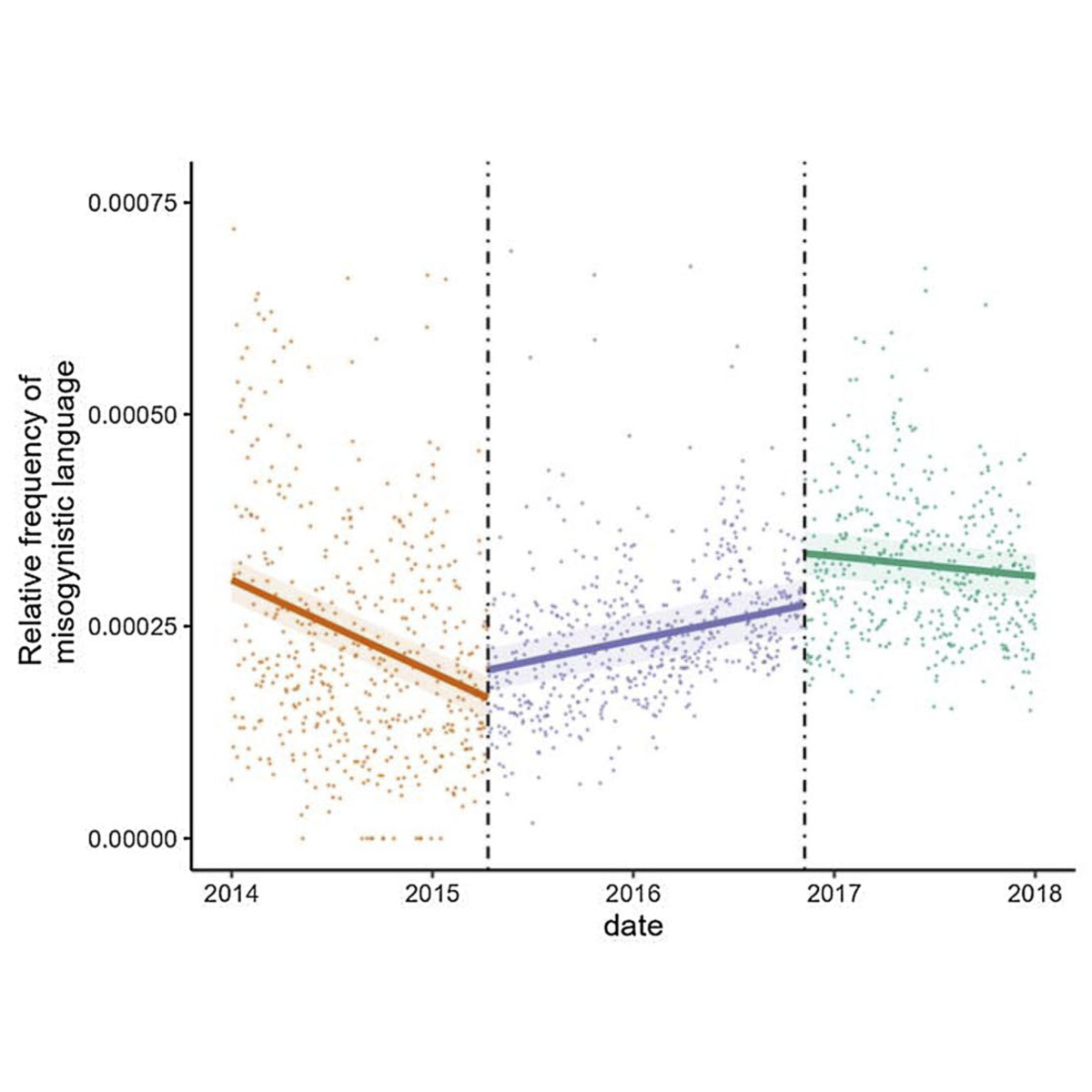Twitter misogyny associated with Hillary Clinton increased throughout the 2016 U.S. election campaign
M. Weaving, T. Alshaabi, M. V. Arnold, K. Blake, C. M. Danforth, P. S. Dodds, N. Haslam, and C. Fine
Scientific Reports, 13, Article number: 5266, 2023

Times cited: 22
Abstract:
Online misogyny has become a fixture in female politicians' lives. Backlash theory suggests that it may represent a threat response prompted by female politicians' counterstereotypical, power-seeking behaviors. We investigated this hypothesis by analyzing Twitter references to Hillary Clinton before, during, and after her presidential campaign. We collected a corpus of over 9 million tweets from 2014 to 2018 that referred to Hillary Clinton, and employed an interrupted time series analysis on the relative frequency of misogynistic language within the corpus. Prior to 2015, the level of misogyny associated with Clinton decreased over time, but this trend reversed when she announced her presidential campaign. During the campaign, misogyny steadily increased and only plateaued after the election, when the threat of her electoral success had subsided. These findings are consistent with the notion that online misogyny towards female political nominees is a form of backlash prompted by their ambition for power in the political arena.
- This is the default HTML.
- You can replace it with your own.
- Include your own code without the HTML, Head, or Body tags.
BibTeX:
@article{weaving2023a,
author = {Weaving, Morgan and Alshaabi, Thayer and Arnold, Michael V. and Blake, Khandis and Danforth, Christopher M. and Dodds, Peter S. and Haslam, Nick and Fine, Cordelia},
title = {Twitter misogyny associated with {H}illary {C}linton increased throughout the 2016 {U}.{S}. election campaign},
journal = {Scientific Reports},
year = {2023},
key = {politics,stories,language,mysogyny,social media},
pages = {Article number: 5266},
}